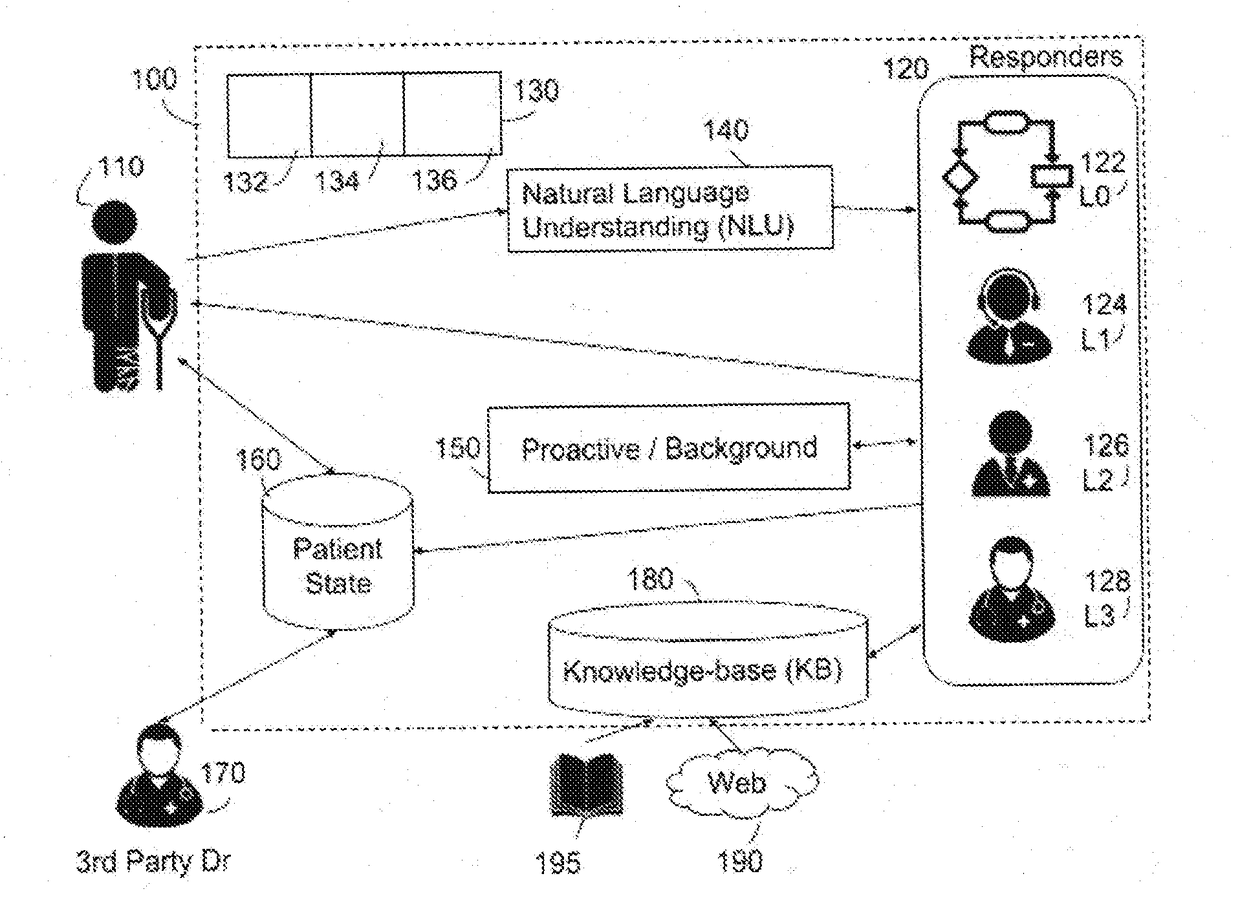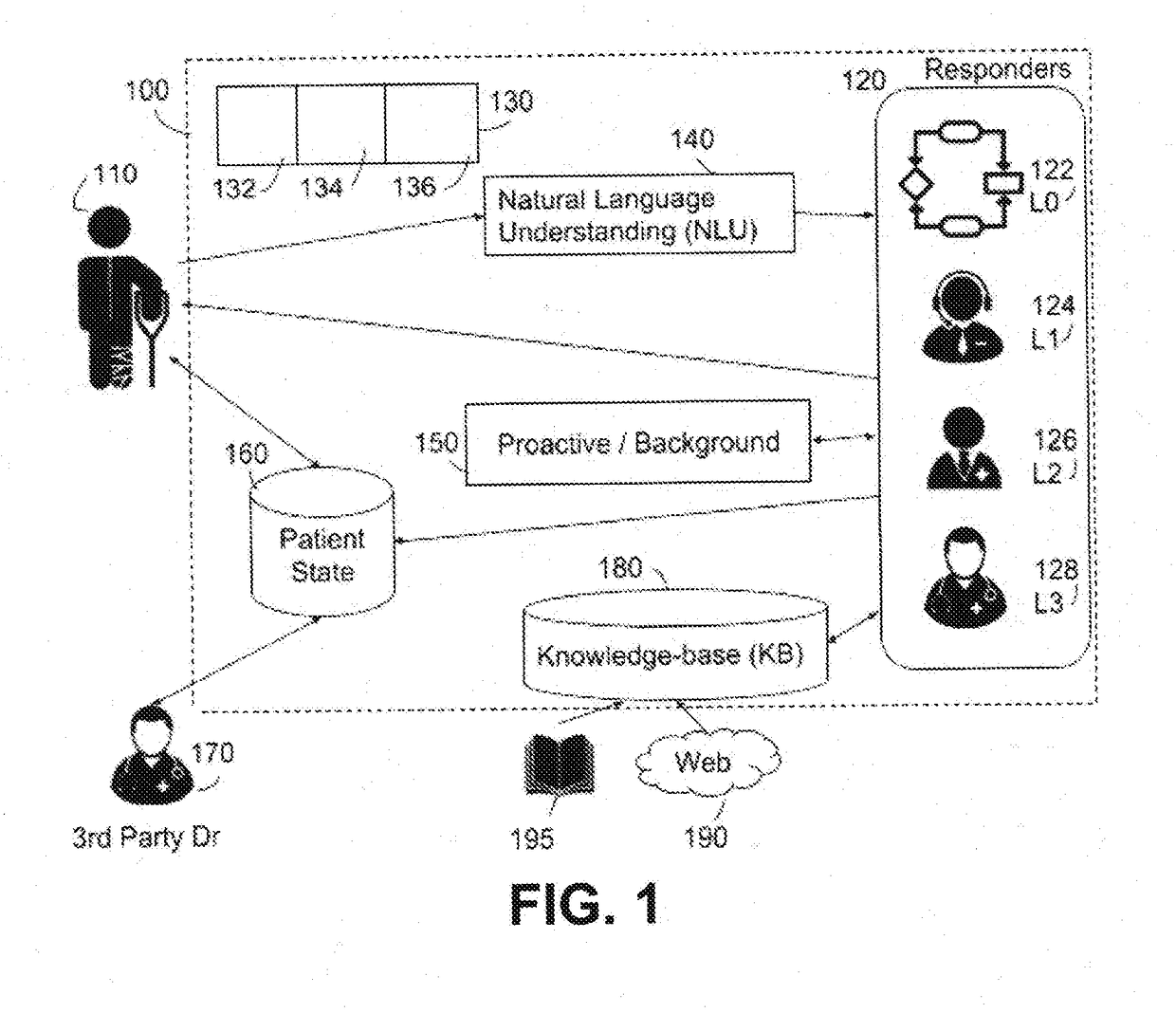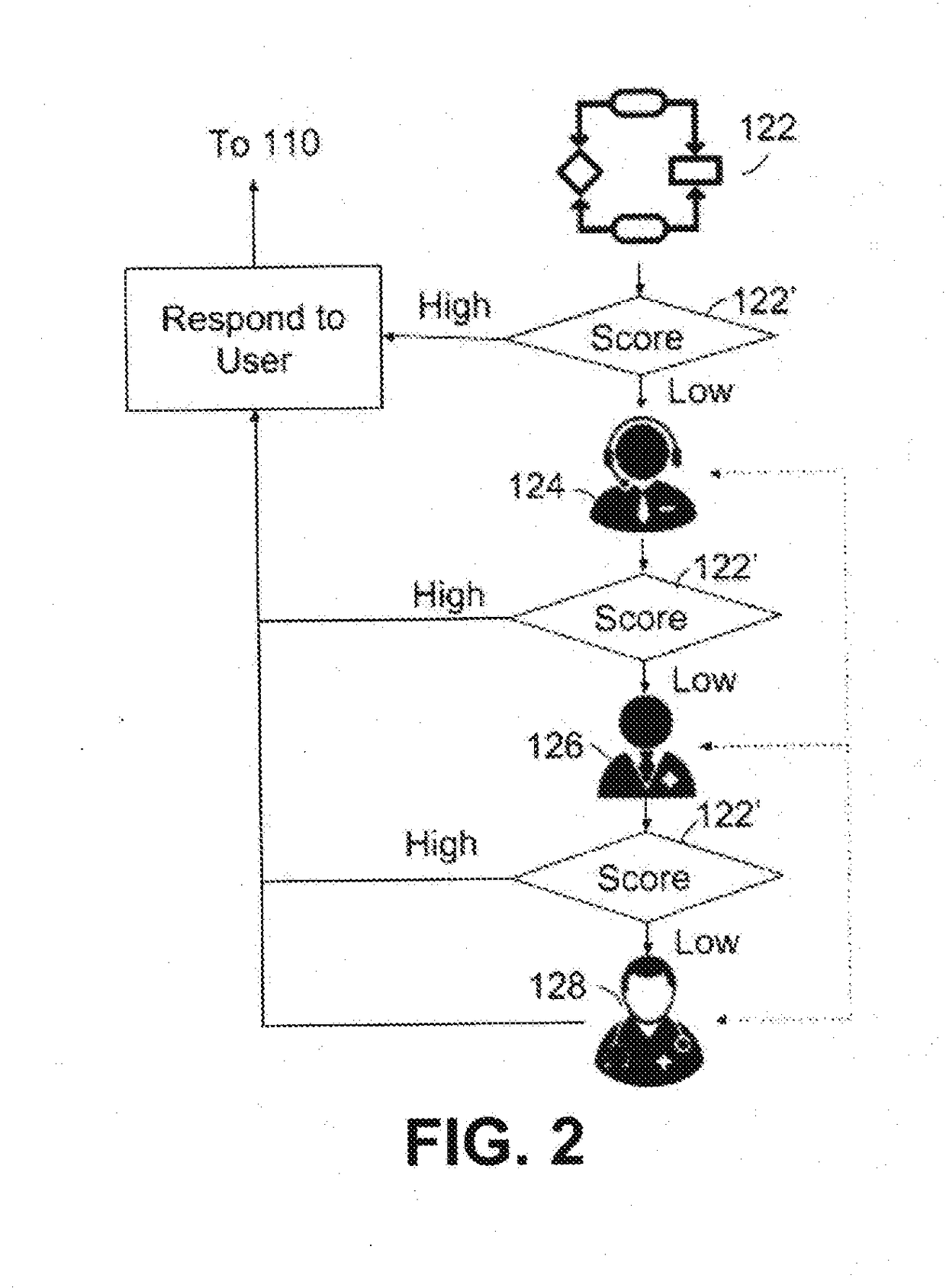Physician-Patient Active Learning Base Communication Method and System
a patient-patient and active learning technology, applied in the field of information transfer, can solve the problems of difficult rapid decision-making for physicians, high cost of medical care, and considerable time delay before a patient's appointment, and achieve the effect of intelligently directed and optimized data flow of natural languag
- Summary
- Abstract
- Description
- Claims
- Application Information
AI Technical Summary
Benefits of technology
Problems solved by technology
Method used
Image
Examples
Embodiment Construction
[0021]As will now be described, embodiments of the present invention provide a method and system to achieve a good balance between human-driven and algorithmic analysis as applied to the modern practice of medicine.
[0022]FIG. 1 depicts a system 100 according to the present invention that provides an intelligent adaptive interface between at least one patient 110, who typically wishes to communicate medical information, perhaps “I think I am sick”, to a tiered or layered responder system 120 that includes at least one human medical practitioner. Communications to and from system 100 and the patient are preferably in natural language and may be spoken or input as text, perhaps using a smartphone or computer device via a secure internet website.
[0023]In FIG. 1, responder system 120 preferably includes a conversation engine based on machine learning (ML) algorithms at lowest layer responder (L0). Specific algorithms used can be Convolutional Neural Nets (CNN) and Logistic regression (LR...
PUM
 Login to View More
Login to View More Abstract
Description
Claims
Application Information
 Login to View More
Login to View More - Generate Ideas
- Intellectual Property
- Life Sciences
- Materials
- Tech Scout
- Unparalleled Data Quality
- Higher Quality Content
- 60% Fewer Hallucinations
Browse by: Latest US Patents, China's latest patents, Technical Efficacy Thesaurus, Application Domain, Technology Topic, Popular Technical Reports.
© 2025 PatSnap. All rights reserved.Legal|Privacy policy|Modern Slavery Act Transparency Statement|Sitemap|About US| Contact US: help@patsnap.com



